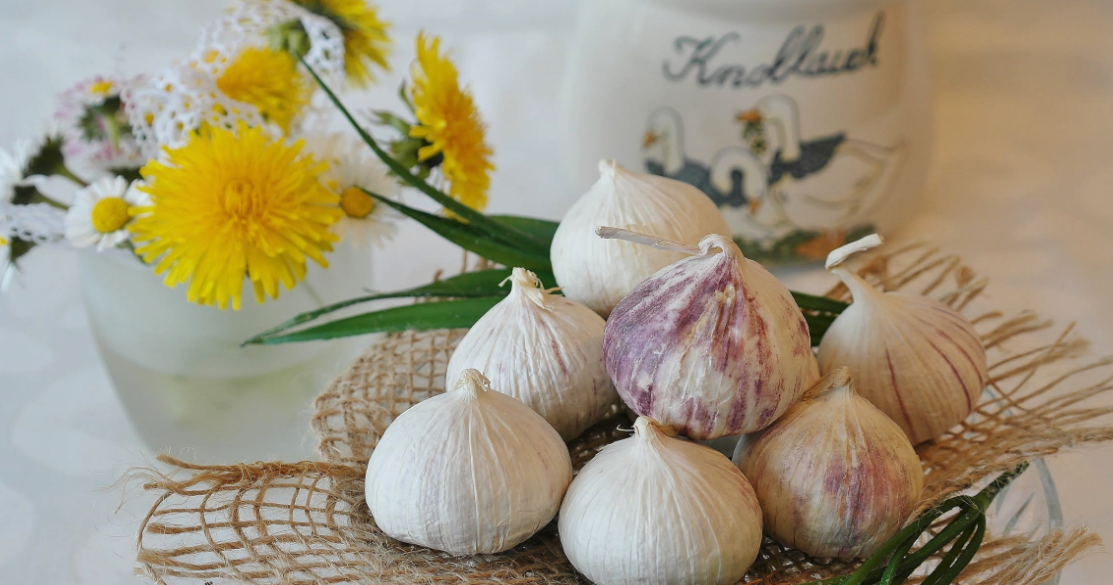Common Name: garlic
Background
- Garlic is the edible bulb from a plant in the lily family. It was traditionally used for health purposes by people in many parts of the world, including the Egyptians, Greeks, Romans, Chinese, Japanese, and Native Americans.
- Currently, garlic is used as a dietary supplement for many purposes, including high blood cholesterol, high blood pressure, and the common cold, as well as in attempts to prevent cancer and other diseases.
- Fresh garlic, garlic powder, and garlic oil are used to flavor foods. Garlic dietary supplements are sold as tablets or capsules. Garlic oil may be used topically (applied to the skin).
How Much Do We Know?
- A great deal of research has been done on garlic, but much of it consists of small, preliminary, or low-quality studies.
What Have We Learned?
- There’s conflicting evidence about whether garlic lowers blood cholesterol levels. If it does, the effect is small, and low-density lipoprotein (LDL) cholesterol (the so-called “bad” cholesterol that’s linked to increased heart disease risk) may not be reduced at all.
- Garlic may be helpful for high blood pressure, but the evidence is weak.
- Some studies indicate that certain groups of people who eat more garlic may be less likely to develop certain cancers, such as stomach and colon cancers. However, garlic in dietary supplement form has not been shown to help reduce the risk of these cancers. The National Cancer Institute recognizes garlic as one of several vegetables with potential anticancer properties but does not recommend using garlic dietary supplements for cancer prevention.
- There’s not enough evidence to show whether garlic is helpful for the common cold.
What Do We Know About Safety?
- Garlic is probably safe for most people in the amounts usually eaten in foods.
- Side effects include breath and body odor, heartburn, and upset stomach. These side effects can be more noticeable with raw garlic. Some people have allergic reactions to garlic.
- Taking garlic may increase the risk of bleeding. If you take an anticoagulant (blood thinner) such as warfarin (Coumadin) or if you need surgery, tell your health care provider if you’re taking or planning to take garlic dietary supplements.
- Garlic has been found to interfere with the effectiveness of some drugs, including saquinavir, a drug used to treat HIV infection.
Keep in Mind
- Tell all your health care providers about any complementary or integrative health approaches you use. Give them a full picture of what you do to manage your health. This will help ensure coordinated and safe care.
Search the scientific literature for potential herb-drug interactions
For More Information
NCCIH Clearinghouse
The NCCIH Clearinghouse provides information on NCCIH and complementary and integrative health approaches, including publications and searches of Federal databases of scientific and medical literature. The Clearinghouse does not provide medical advice, treatment recommendations, or referrals to practitioners.
PubMed®
A service of the National Library of Medicine, PubMed® contains publication information and (in most cases) brief summaries of articles from scientific and medical journals. For guidance from NCCIH on using PubMed, see How To Find Information About Complementary Health Approaches on PubMed.
Office of Dietary Supplements (ODS), National Institutes of Health (NIH)
ODS seeks to strengthen knowledge and understanding of dietary supplements by evaluating scientific information, supporting research, sharing research results, and educating the public. Its resources include publications (such as Dietary Supplements: What You Need to Know), fact sheets on a variety of specific supplement ingredients and products (such as vitamin D and multivitamin/mineral supplements), and the PubMed Dietary Supplement Subset
Key References
- Garlic. In: Blumenthal M, Goldberg A, Brinckmann J, eds. Herbal Medicine: Expanded Commission E Monographs. Newton, MA: Integrative Medicine Communications; 2000:139-148.
- Garlic. Natural Medicines Web site. Accessed at naturalmedicines.therapeuticresearch.com/ on April 14, 2015. [Database subscription].
- Huang J, Frohlich J, Ignaszewski AP. The impact of dietary changes and dietary supplements on lipid profile. Canadian Journal of Cardiology. 2011;27(4):488-505.
- Lissiman E, Bhasale AL, Cohen M. Garlic for the common cold. Cochrane Database of Systematic Reviews. 2014;(11):CD006206. Accessed at http://www.thecochranelibrary.com(link is external) on April 15, 2015.
- Milner JA. Garlic. In: Coates PM, Betz JM, Blackman MR, et al., eds. Encyclopedia of Dietary Supplements. 2nd ed. New York, NY: Informa Healthcare; 2010:314-324.
- National Cancer Institute. Garlic and Cancer Prevention. National Cancer Institute Web site. Accessed at https://www.cancer.gov/cancertopics/causes-prevention/risk/diet/garlic-fact-sheet on April 14, 2015.
- Reinhart KM, Talati R, White CM, et al. The impact of garlic on lipid parameters: a systematic review and meta-analysis. Nutrition Research Reviews. 2009;22(1):39-48.
- Rohner A, Ried K, Sobenin IA, et al. A systematic review and metaanalysis on the effects of garlic preparations on blood pressure in individuals with hypertension. American Journal of Hypertension. 2015;28(3):414-423.
This publication is not copyrighted and is in the public domain. Duplication is encouraged.










+ There are no comments
Add yours